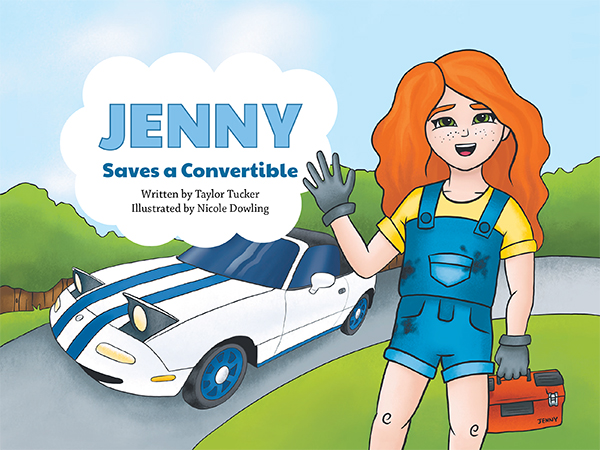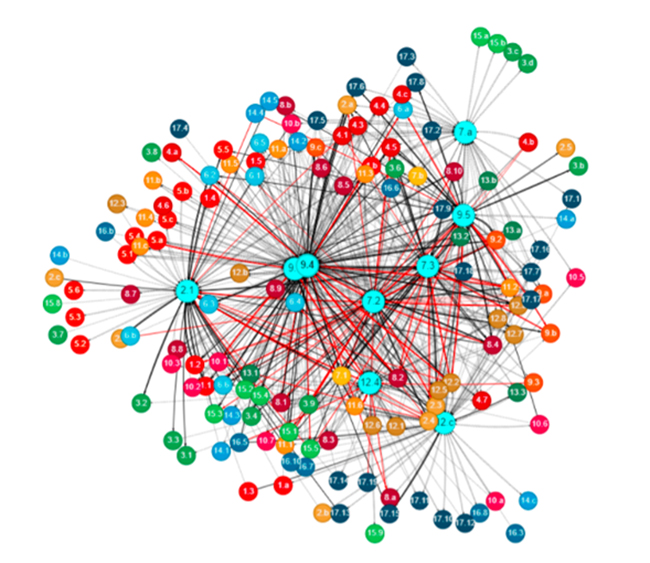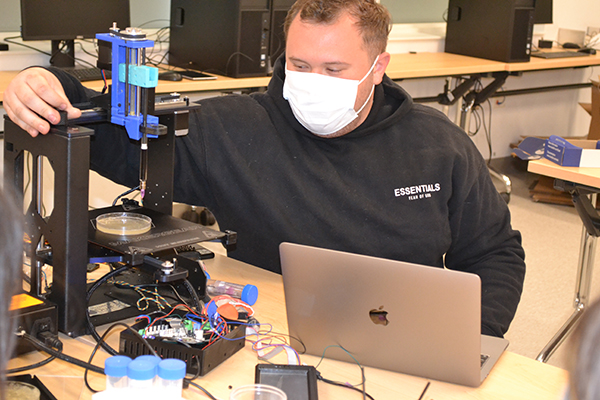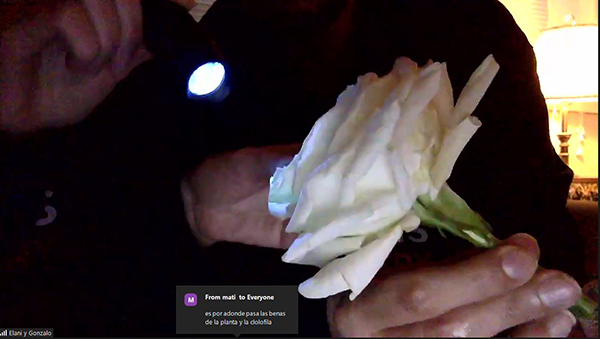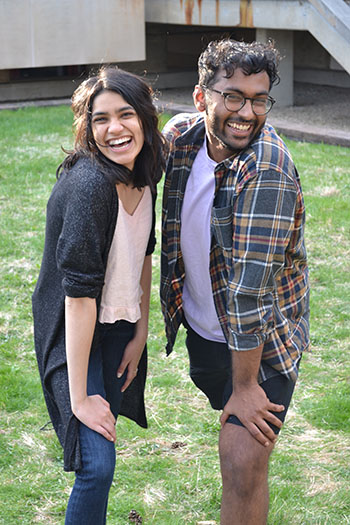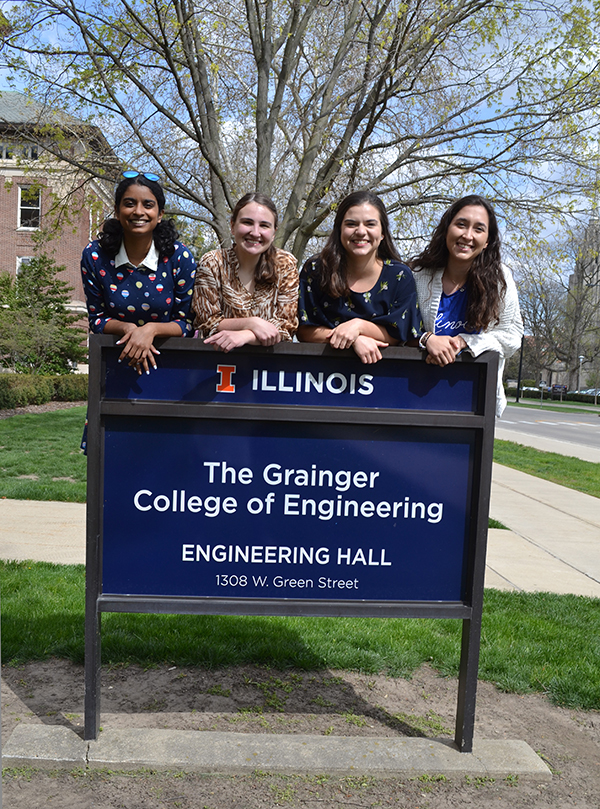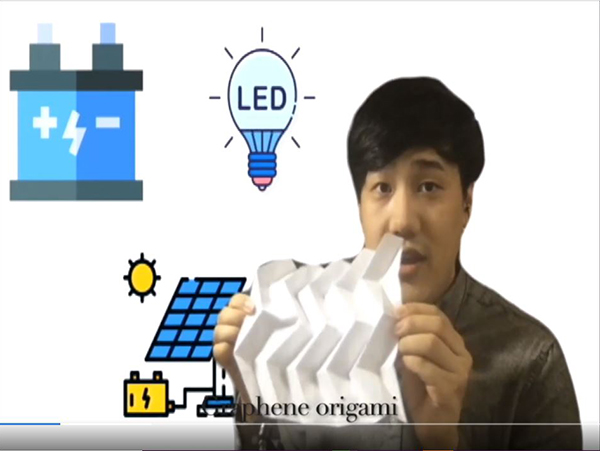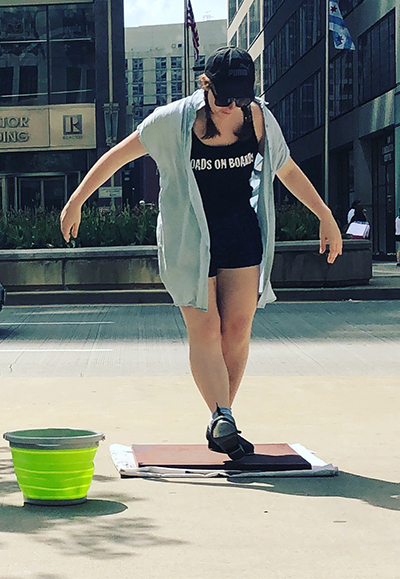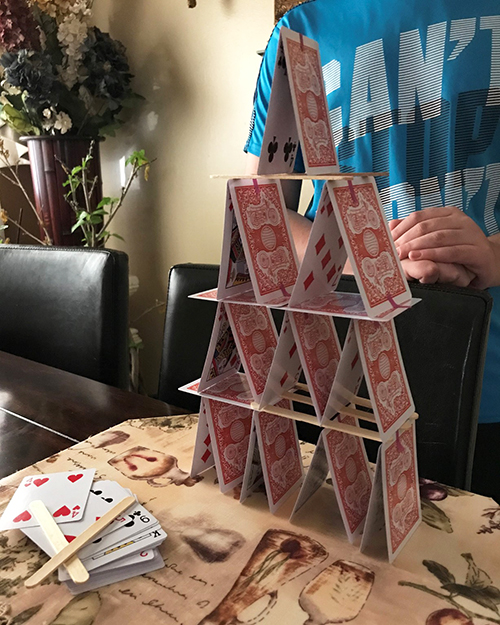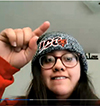Uni High Students Evaluate Lego DNA/RNA Kit Prototypes
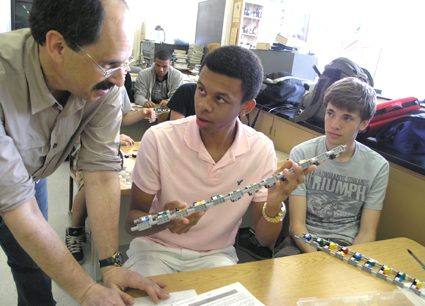
Science teacher David Stone discusses procedures for using the Lego kits with students during the evaluation session.
Legos? Cool!!!
June 22, 2012
This was the initial impression of one of the University Laboratory High School students given a chance to “play” with Legos during school. However, he wasn’t using a run-of-the-mill set that can be purchased in the toy section of any store. This was one of a limited number of kits the company manufactured for instructing students about DNA, RNA, and proteins.
Uni High was one of three schools in the nation whose students were given the opportunity to test run and evaluate these prototype kits for the Lego company. After teaching students in his Human Genetics and Society class the basics about DNA, RNA, and proteins, science teacher David Stone used the students in his class as “guinea pigs” to test the ease of use and value of using the kits either to learn or reinforce principles on genetics. He had the students work with the kits, following the manufacturer’s instructions, then complete an assessment form he developed.
After working with the kit on DNA/RNA, students were first to record their initial impressions, which ranged from “Super fun,” to “Looks repetitive,” to “Cool idea; high expense seems ridiculous,” to “Why is this $2,000?”
The survey then questioned students about their thoughts while working through the activity; some students found working with the Legos to be helpful, enabling them to visualize what they had already learned about DNA, while others felt they were not extremely challenging. Below are some of the comments:
- “Very clear, interesting, fun way to learn.”
- “Putting the structures together, I thought it was really cool and interesting to see the double helix structure. Seeing how the pieces fit together was also a great way to visualize.”
- “I like the way the model is easy to build and actually twists. It’s also accurate in that the pieces are different sizes.”
- “The instructions are pretty confusing and are in a weird order. I think we should work through transcription before talking about amino acids.”
- “I feel like all these Legos will do is help people to see the pairings of the ladder, which isn’t much, and is just a basic, basic lesson.”
- “Repetitive; not hard to use; good job at providing a visual image of the idea (good for visual learners).”
- “The Legos were pretty simple. It was fun to mess around with them, but it didn’t really teach me anything new.
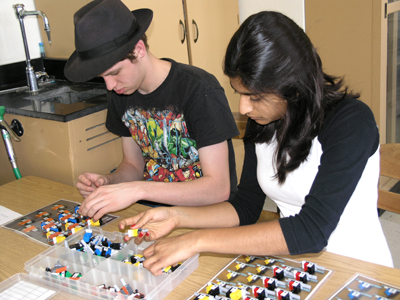
Two students lay out the pieces on the enclosed illustrated sheets prior to beginning construction of their DNA strand.
Regarding the clarity of the instructions provided with the kits, student opinions varied widely; many students felt the instructions were quite clear; others included constructive criticisms for improving the clarity of the instructions.
- Very clear; maybe a little too basic, but would be awesome for someone starting to learn.
- Poor. They were pretty confusing, and would be even more so if I didn’t already know about DNA.
- The instructions were fairly clear, and diagrams occasionally would have been useful."
Student comments regarding the background required to use the Lego kits mostly indicated that not much of a background was needed, since the kit itself taught the student as he/she progressed through it.
- “Some background, but not too much, is needed. Presenting the information in advance and then pulling out the kits would be best.”
- "Some background required, but the booklet explains a lot of the concepts."
- “There is very minimal background knowledge needed because they begin very basic and build up. Maybe basic knowledge of the cell, organellas, and the nucleus.
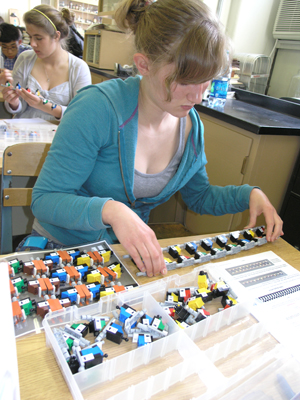
Student in Stone's Human Genetics class uses Lego kit to determine its usefulness for instruction.
Strengths that students noted included: the kits helped students to visualize DNA processes better, and the hands-on aspect helped them to more easily grasp the processes:
- • “This helped me to visualize semi-conservative replication much better.”
- • “I like the physical aspect of this activity; it makes replication and transcription easy to understand.”
- • “Good graphic representation of DNA, RNA; great for learning these concepts for the first time.”
Students’ responses to the areas in need of improvement included:
- • “I wish the kit included enzymes; it seems a bit too simplified. Also, the sheets to lay out the pieces seemed a little pointless; they could just tell you how many pieces you should have."
- • “Clarify instructions a little and maybe talk about enzymes used in replication; make helix more flexible!”
The students’ responses to the overall assessment question ranged from positive to negative:
- “Overall, this was a fun activity that could be improved with some editing to the instructions."
- “I think this kit should be used during the chapter. So after each lecture, there would be “kit time” where students would receive a hands-on experience.”
- “Good for basic learning.”
- “Good for the classroom; relevant and entertaining.”
- “It is a great kit to visualize DNA and DNA replication with seeing how the bases paired together, and how DNA was structured made me understand the material better.”
- “The model kit is cool, but I’m not sure if it’s worth the time, effort, and money.”
- “This was really fun, and I think helps to cement a lot of the processes and ideas we have been learning about.”
- “Pretty good for a younger age.”

One student reads instructions included with the kit while the other follows the directions.
Reactions were varied regarding whether Mr. Stone should use the Legos next year in the Human Genetics class:
- “Yes, I think this would be a good activity to use while you are teaching these processes; it would help students understand how they work in a more concrete way.”
- “Yes, it’d be really nice to have them to use during the unit.”
- “No. Reading the textbook and watching movies is far more informative.”
- “I think if it was an intro activity for review or something it would be useful.”
- “I think that it would work better in normal bio.”
- “I wish there was a bit more learning involved, or that the activities were a little more complex, because this felt like a lot of just snapping and unsnapping pieces.
- “Teaching is clear and straightforward; good diagrams to explain different protein types.
- “Not as cool as Lego kit #1: doesn’t really explain how proteins get their complicated structure in depth, with was kind of confusing.”
- “This is a little more interesting than the DNA one; it actually taught me a little.”
- “This demonstrated how proteins are folded in special ways, and how we break down proteins to make new proteins."
Regarding the second kit on proteins, some of the responses included:
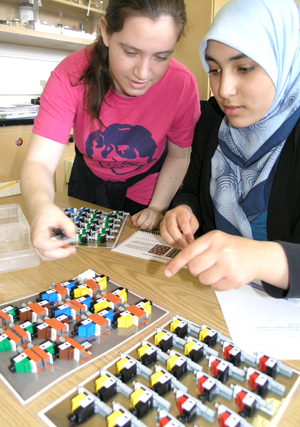
Two students discuss the next step as they try out the kit.
Overall, while student felt the kits were beneficiall in helping them to visualize what they had learned, most felt the kits were repetitive or would be more beneficial for younger students first learning about DNA. Mr. Stone agreed and was planning to use them in his biology class: “I think the Legos can be quite helpful in instruction and look forward to using them in December with my Introductory Biology class. The strengths are the clarity of the instructions and the opportunity to construct and manipulate the student-produced molecule models."
Stone did see some areas that could use improvement: "The primary weakness was that the Legos are limited in their versatility. The importance and beauty of the action of enzymes involved in replication, so readily seen in various animations on websites and YouTube videos, is lost entirely.” However, he did see enough benefit that he plans to use them in one of his classes, “I'm really looking forward to using them with my Introductory Biology students next year!”
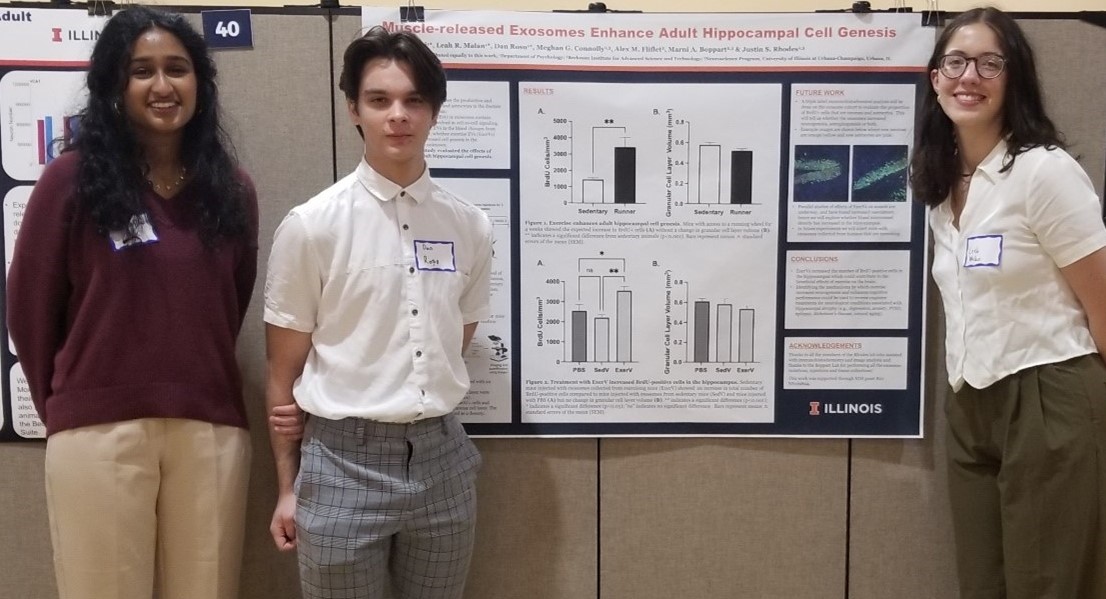
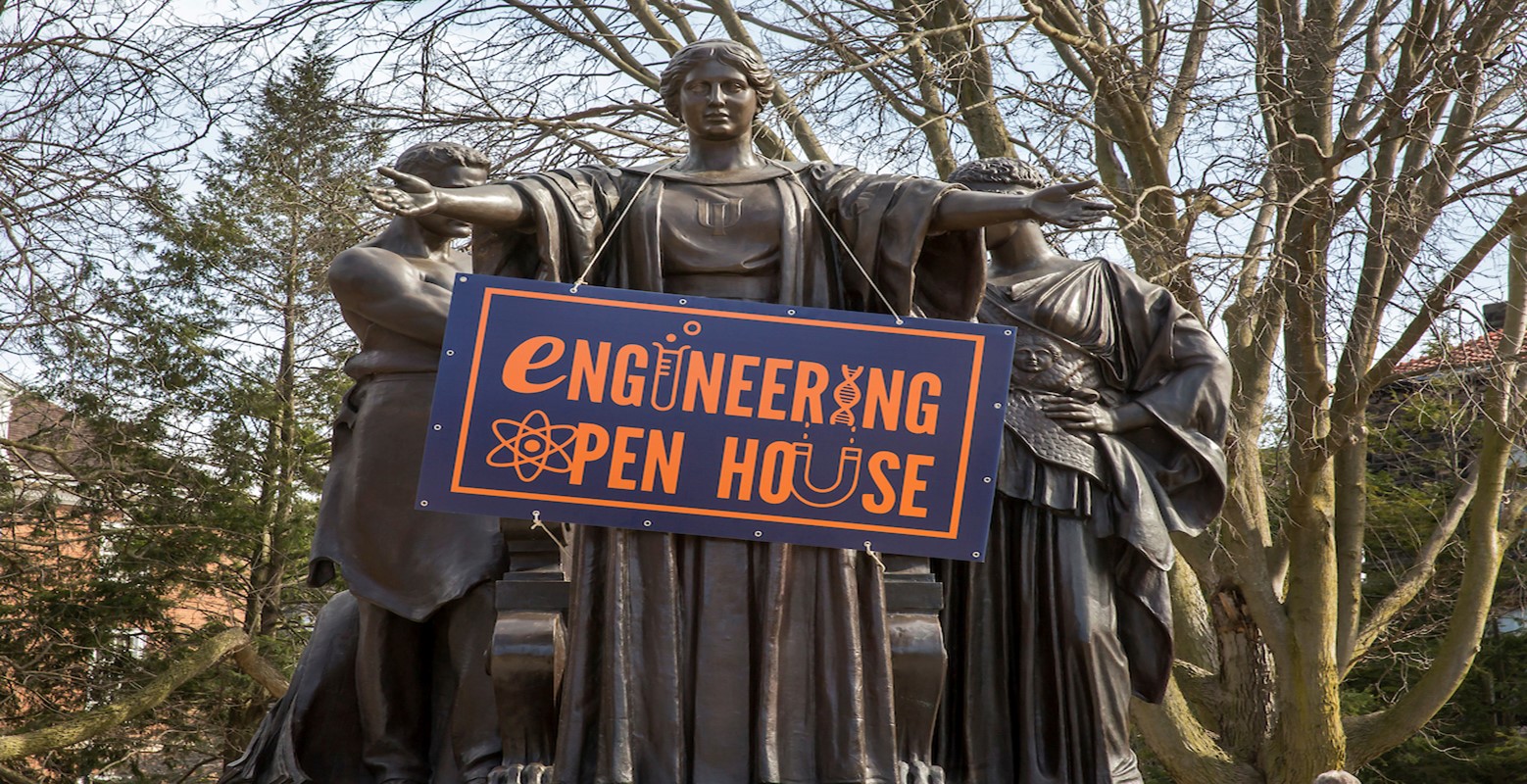
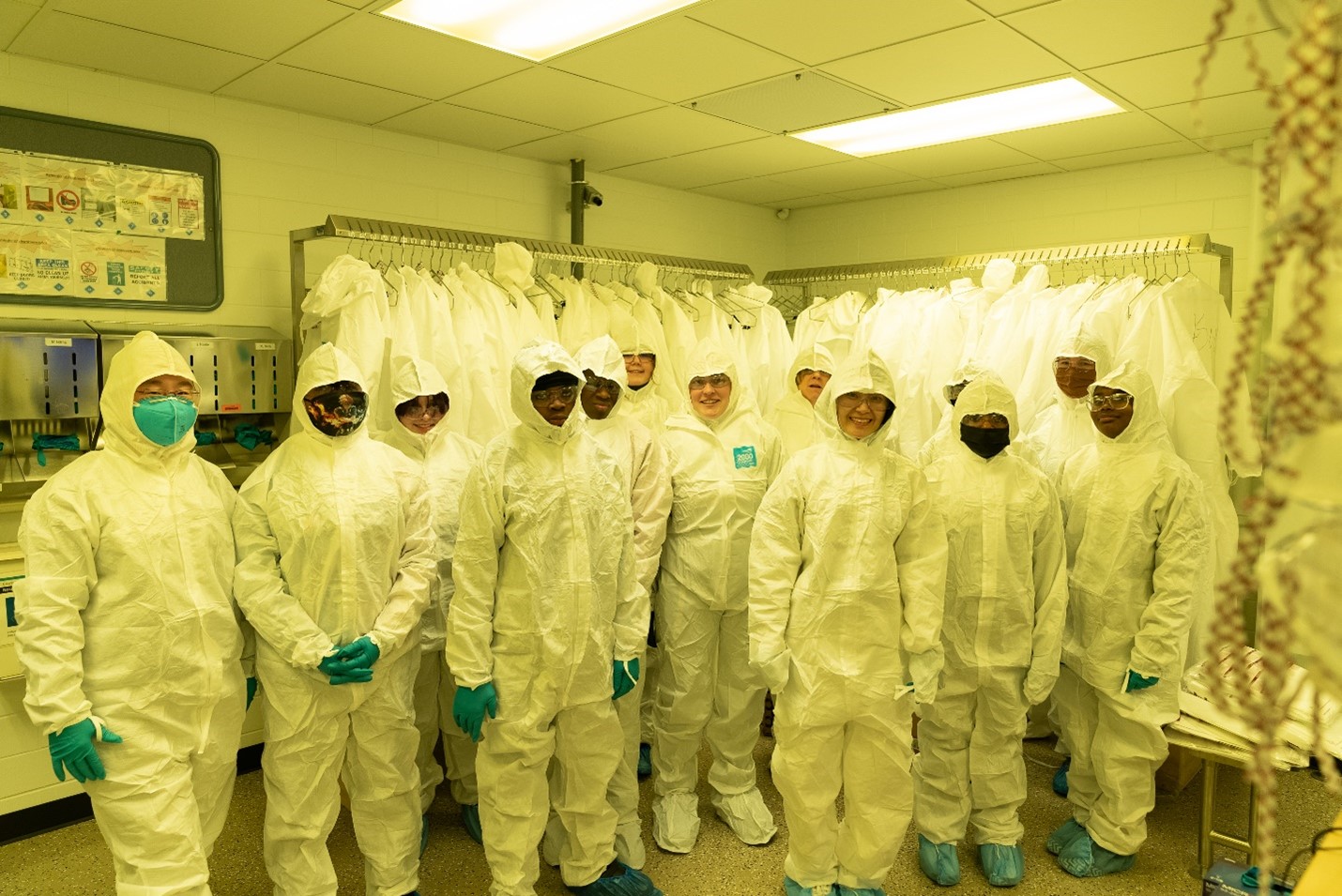
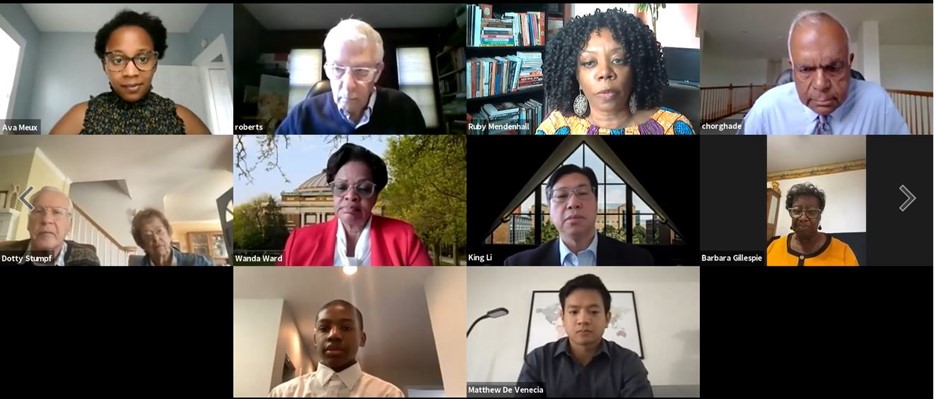

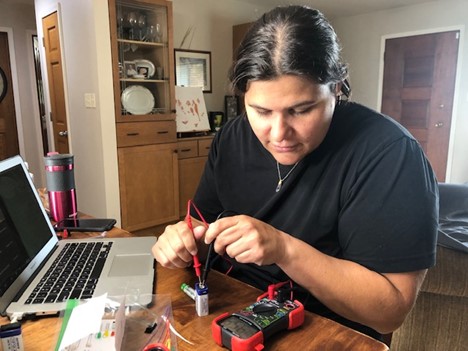
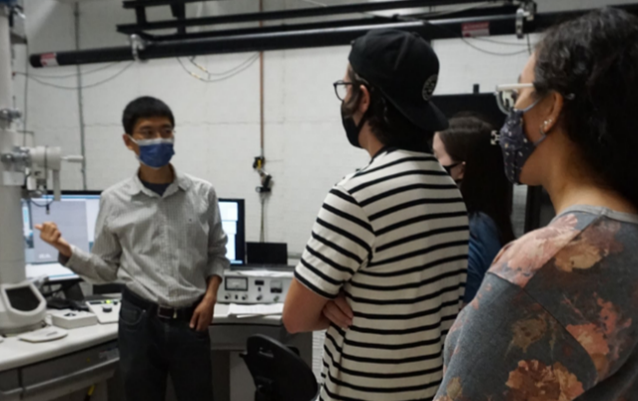
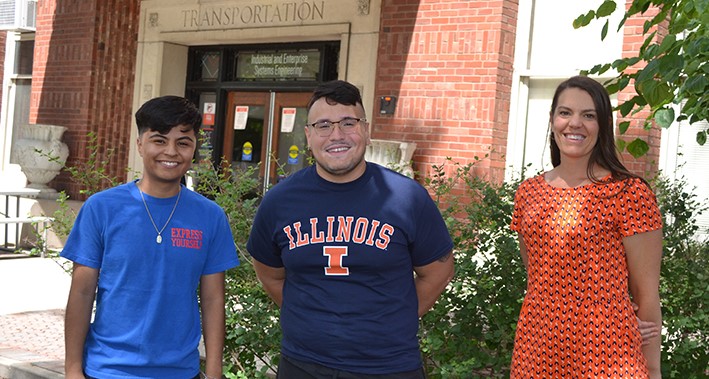



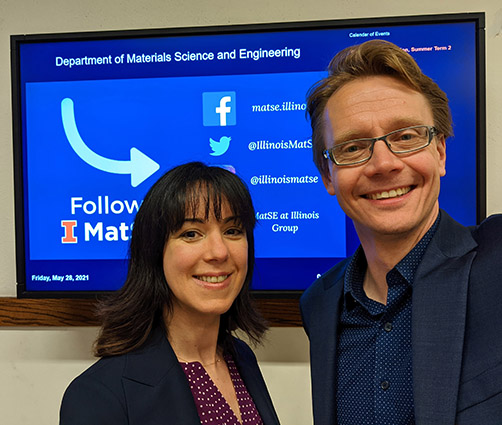

.jpg)
